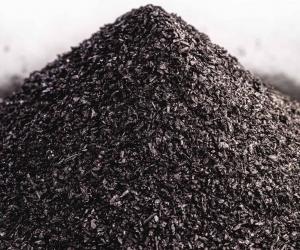The Complete List of Every U.S. State Amphibian
Only about half of the states in the United States have an official state amphibian. However, two of these states have named two each. Additionally, a few others have either a proposed or unofficial species. Read on for the complete list of the frogs, salamanders, and newts that currently serve as state amphibians, including photos and facts about each!
Alabama: Red Hills Salamander (Phaeognathus hubrichti)
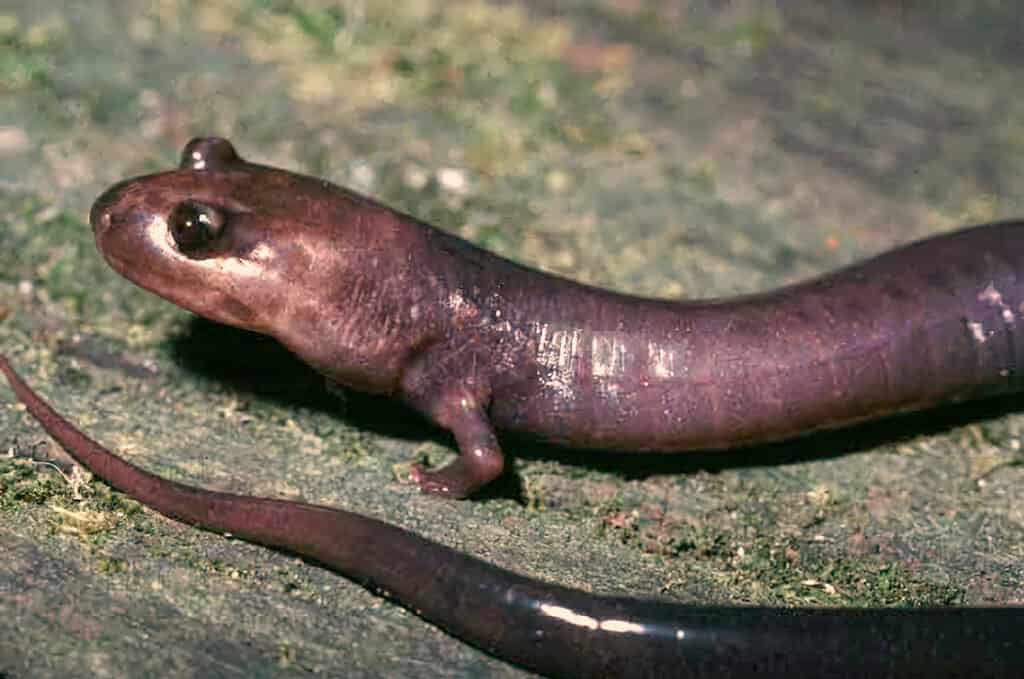
The Red Hills
salamander
is endemic to the Red Hills region of Alabama, where it lives in burrows.
©United States Geographical Survey / public domain – License
Alabama named the Red Hills Salamander its official state amphibian in 2000. The IUCN currently lists it as a globally endangered species.
Arizona: Arizona Tree Frog (formerly Hyla eximia, now Dryophytes eximius or Dryophytes wrightorum)
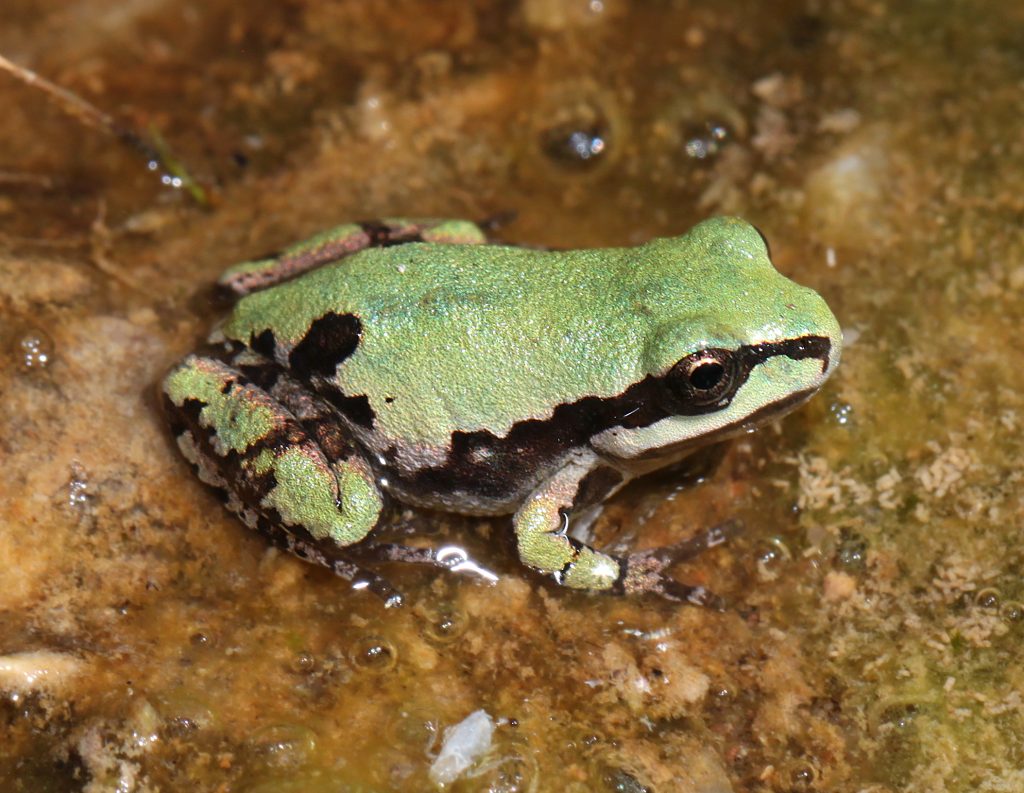
Wright’s mountain
tree frog
is found in Arizona and New Mexico as well as northern Mexico.
©ALAN SCHMIERER / CC0 – License
Arizona named the Arizona Tree Frog its official state amphibian in 1986. However, at the time it was named, it was a single species listed under the scientific name Hyla eximia. This taxon was subsequently revised and then split into two species, the mountain tree frog (Dryophytes eximius) and Wright’s mountain tree frog (Dryophytes wrightorum). While some sources list the former as Arizona’s current state amphibian, that species as currently defined only lives in Mexico. Other sources, such as the Arizona State Library, therefore now recognize that the latter as the true Arizona tree frog.
California: California Red-Legged Frog (Rana draytonii)
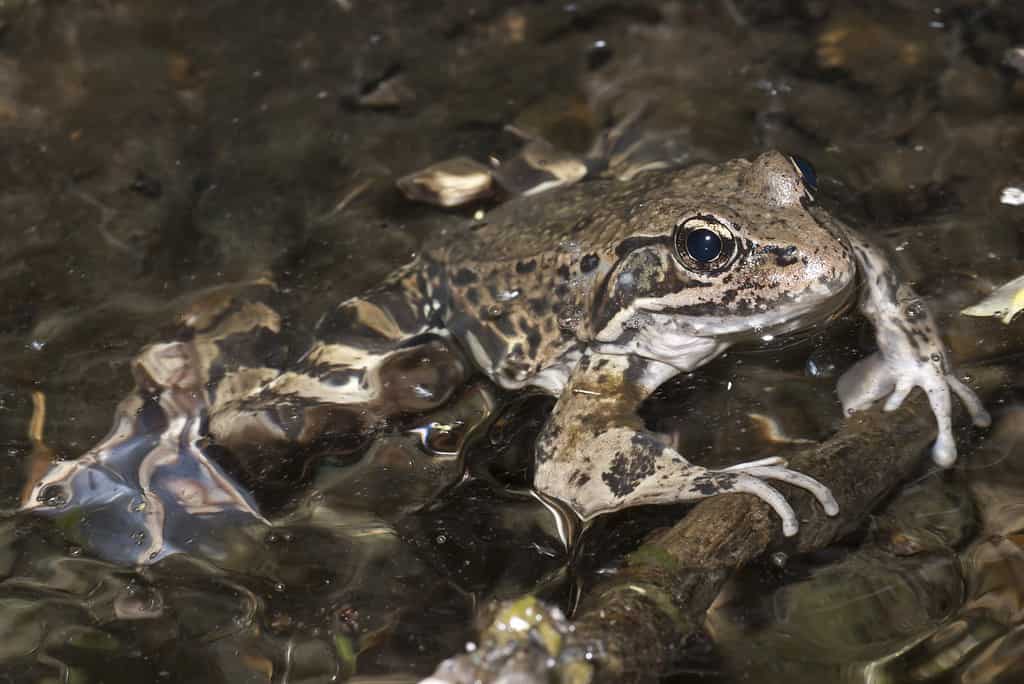
The California red-legged frog lives in both California, USA, and Baja California, Mexico.
©Jason Mintzer/Shutterstock.com
California named the California Red-Legged Frog its official state amphibian in 2014. The U.S. Endangered Species Act currently lists it as a threatened species.
Colorado: Western Tiger Salamander (Barred Tiger Salamander) (Ambystoma mavortium)
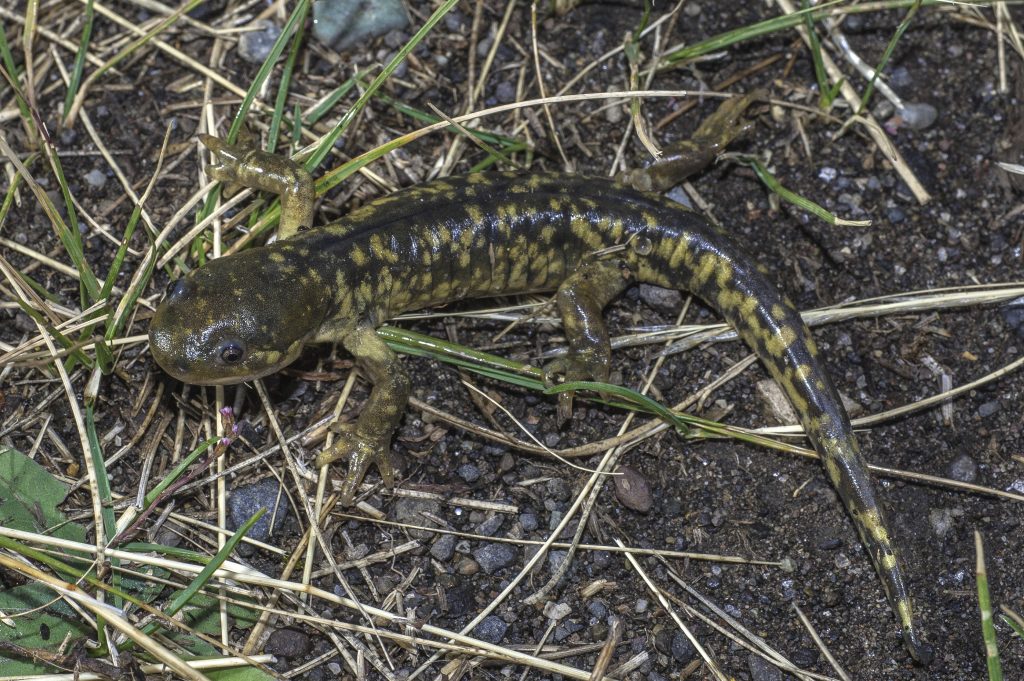
The western
tiger
salamander aka barred tiger salamander is a mole salamander species and one of North America’s largest terrestrial salamanders.
©Gerald Corsi/iStock via Getty Images
Colorado named the western tiger salamander its official state amphibian in 2012. It is also called the barred tiger salamander.
Georgia: American Green Tree Frog (Dryophytes cinereus)
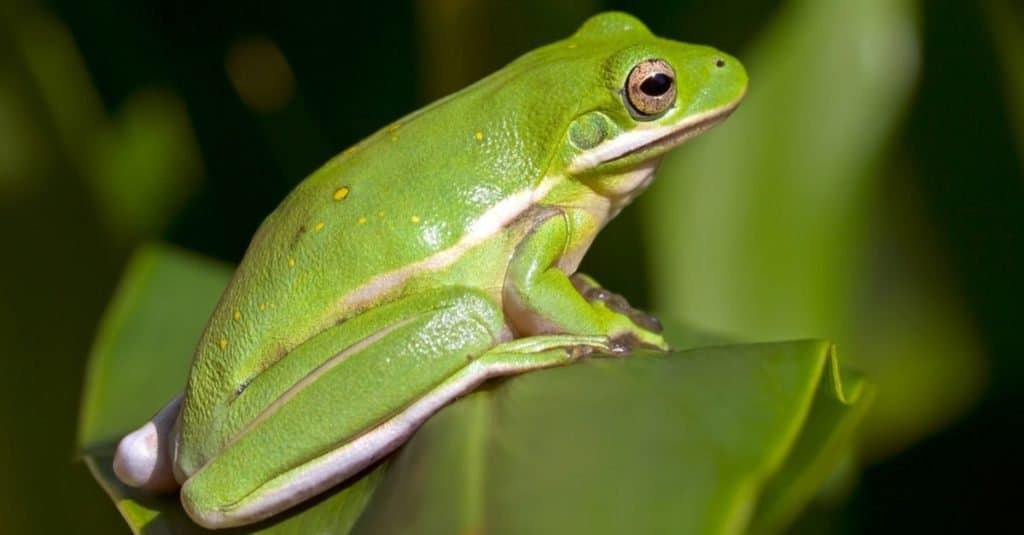
The American
green tree frog
is native to the Central and Southeastern United States.
©LorraineHudgins/Shutterstock.com
Georgia named the American green tree frog its official state amphibian in 2005.
Idaho: Idaho Giant Salamander (Dicamptodon aterrimus)
Idaho named the Idaho giant salamander its official state amphibian in 2015.
Illinois: Eastern Tiger Salamander (Ambystoma tigrinum)
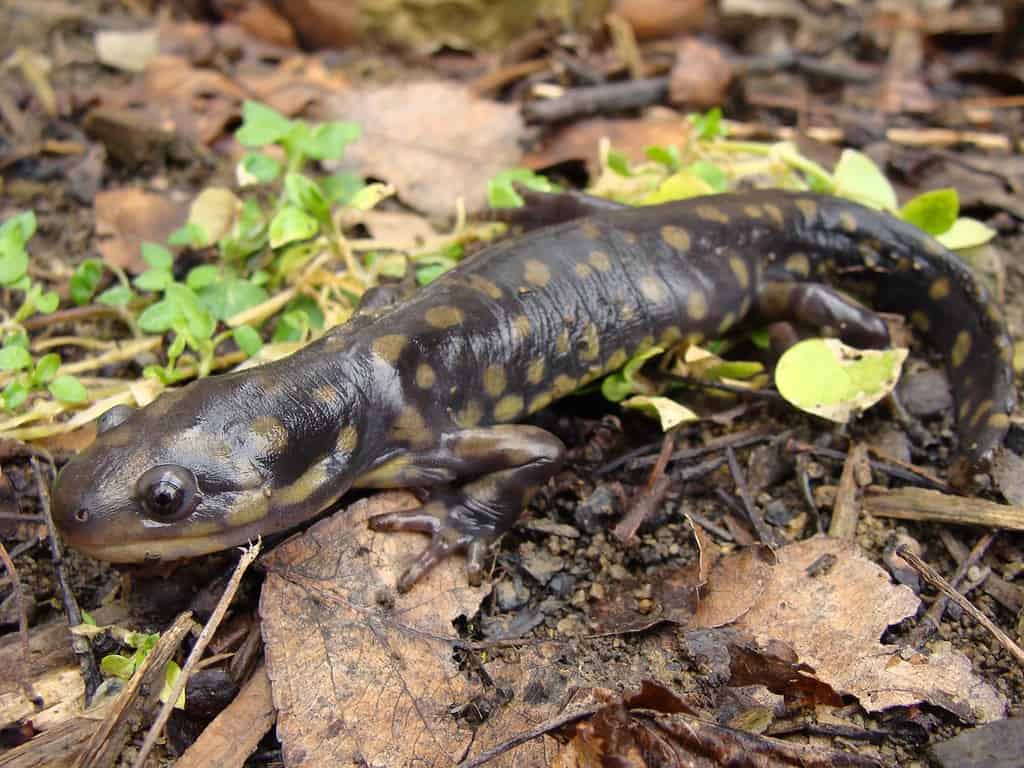
The eastern tiger salamander is a mole salamander species and one of North America’s largest terrestrial salamanders.
©Matt Jeppson/Shutterstock.com
Illinois named the eastern tiger salamander its official state amphibian in 2005.
Iowa: American Bullfrog (Lithobates catesbeianus) (unofficial)
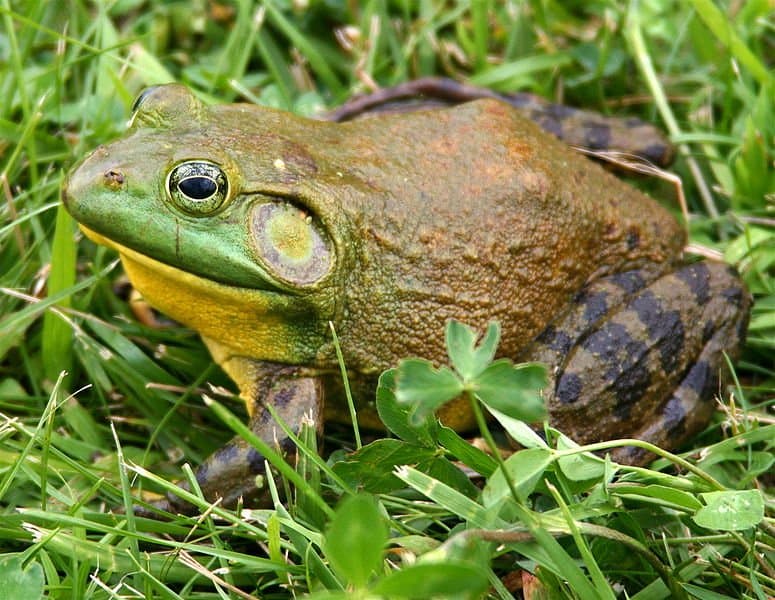
The American bullfrog is originally native to the eastern half of North America but has spread across much of the western half as well.
©Carl D. Howe / Creative Commons
Iowa has no official state amphibian, but many consider the American bullfrog as the unofficial state amphibian.
Kansas: Barred Tiger Salamander (Western Tiger Salamander) (Ambystoma mavortium)

The western tiger salamander aka barred tiger salamander is a mole salamander species and one of North America’s largest terrestrial salamanders.
©Gerald Corsi/iStock via Getty Images
Kansas named the barred tiger salamander its official state amphibian in 2005. It is also called the western tiger salamander.
Louisiana: American Green Tree Frog (Dryophytes cinereus)

The American green tree frog is native to the Central and Southeastern United States.
©LorraineHudgins/Shutterstock.com
Louisiana named the American green tree frog its official state amphibian in 1993.
Minnesota: Northern Leopard Frog (Lithobates pipiens)(Proposed)
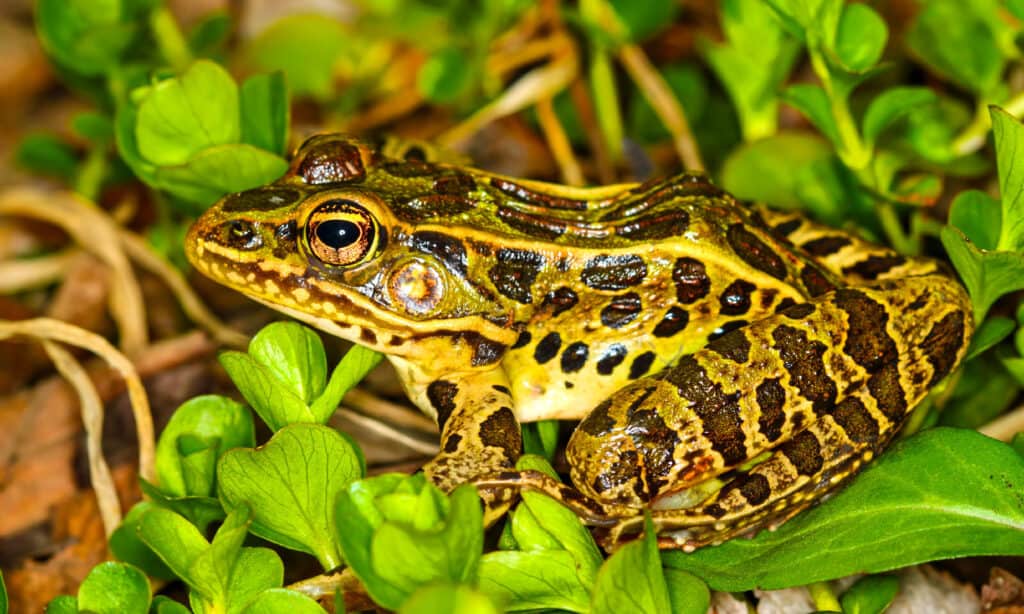
The northern
leopard
frog has multiple color morphs across its range in both the United States and Canada.
©Jason Patrick Ross/Shutterstock.com
Minnesota has twice proposed the northern leopard frog become its official state amphibian, back in both 1998 and 1999, but it has yet to be passed into law.
Missouri: American Bullfrog (Lithobates catesbeianus)

The American bullfrog is originally native to the eastern half of North America but has spread across much of the western half as well.
©Carl D. Howe / Creative Commons
Missouri named the American bullfrog its official state amphibian in 2005.
New Hampshire: Red-spotted Newt (Notophthalmus viridescens)
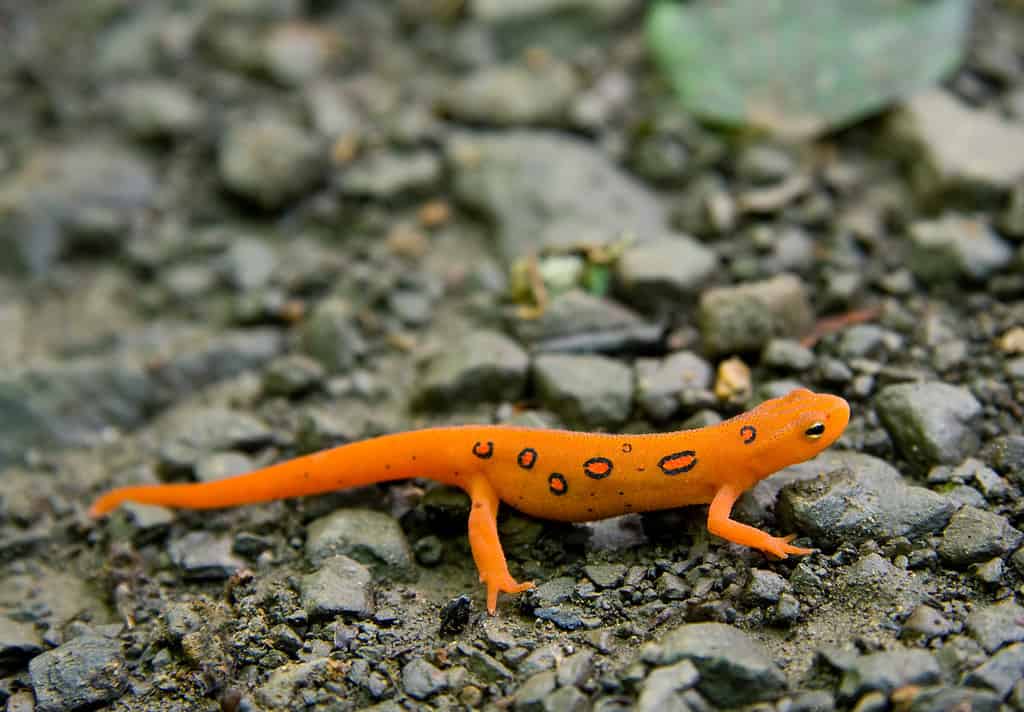
The red-spotted newt is common across eastern North America, and in its terrestrial juvenile stage is also known as a red eft.
©epantha/iStock via Getty Images
New Hampshire named the red-spotted newt its official state amphibian in 1985.
New Jersey: Pine Barrens Tree Frog (Dryophytes andersonii)
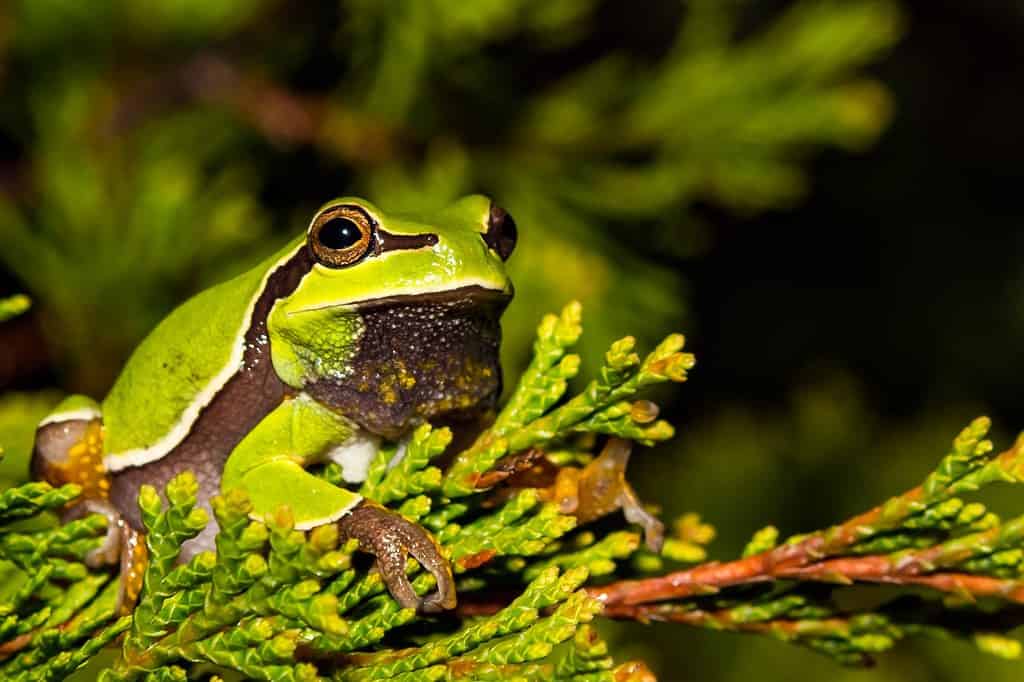
The pine barrens tree frog persists in three separate populations found in New Jersey, North and South Carolina, and Florida and Alabama.
©Jay Ondreicka/Shutterstock.com
New Jersey named the pine barrens its official state amphibian in 2018. It is currently listed as an endangered species in the state.
New Mexico: New Mexico Spadefoot Toad (Spea multiplicata)
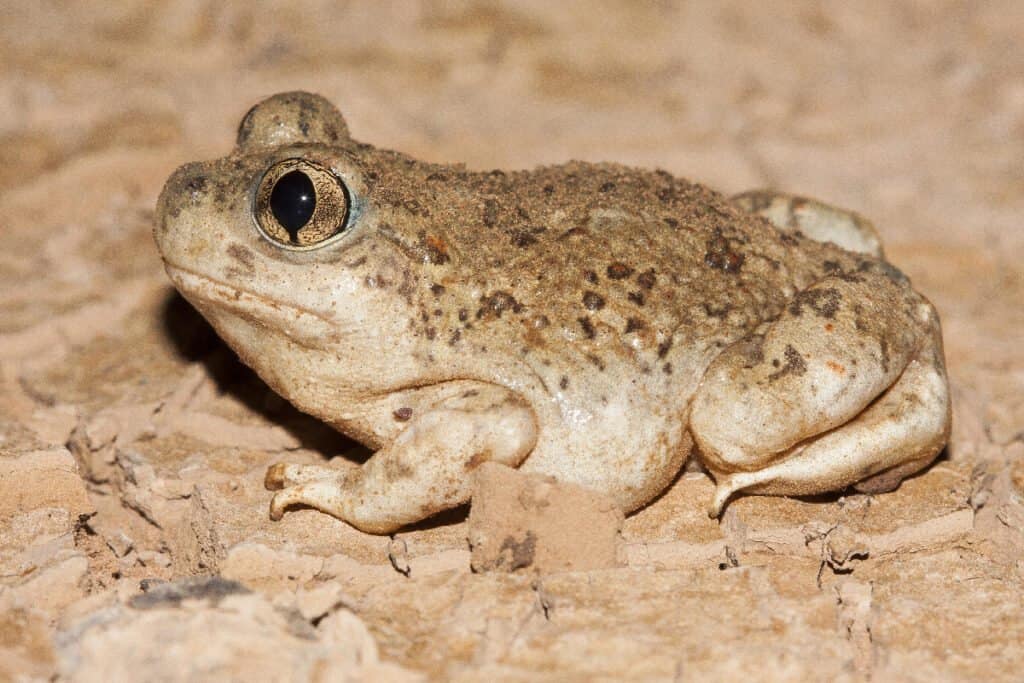
The New Mexico
spadefoot toad
is native to both the Southwestern United States and Mexico.
©Viktor Loki/Shutterstock.com
New Mexico named the New Mexico spadefoot toad its official state amphibian in 2003.
New York: Wood Frog (Lithobates sylvaticus) (Proposed)
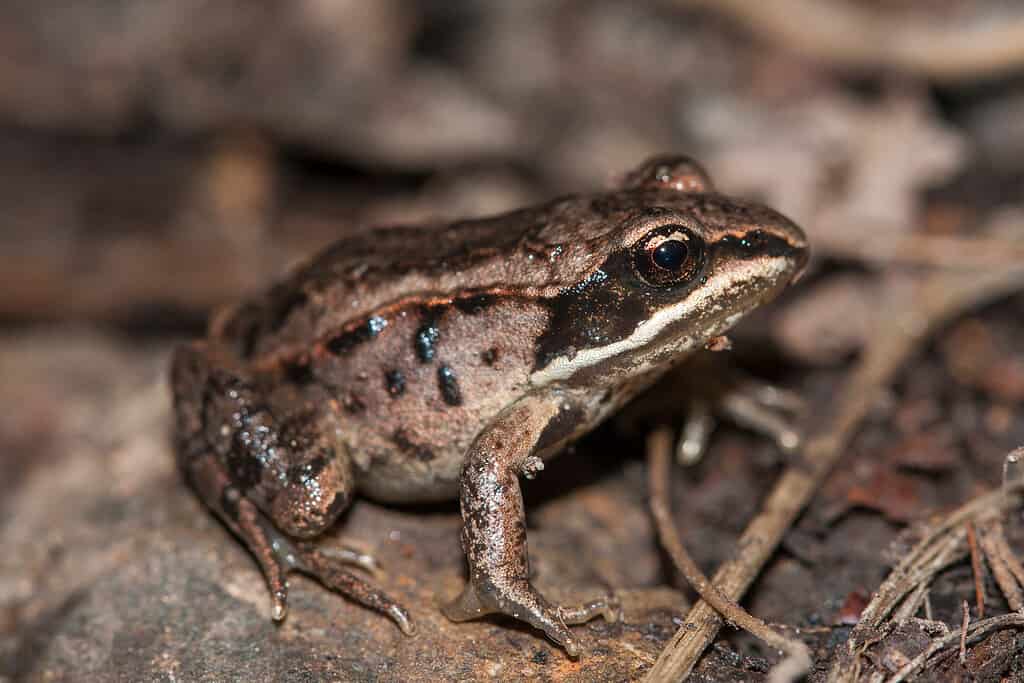
The wood frog ranges from as far north as Canada’s boreal forests to the southern Appalachian Mountains.
©Viktor Loki/Shutterstock.com
New York proposed the wood frog become its official state amphibian back in 2015, but it has yet to be passed into law.
North Carolina: Pine Barrens Tree Frog (Dryophytes andersonii) (State Frog)

The pine barrens tree frog persists in three separate populations found in in New Jersey, North and South Carolina, and Florida and Alabama.
©Jay Ondreicka/Shutterstock.com
North Carolina named the pine barrens tree frog its official state frog in 2013.
North Carolina: Marbled Salamander (Ambystoma opacum) (State Salamander)
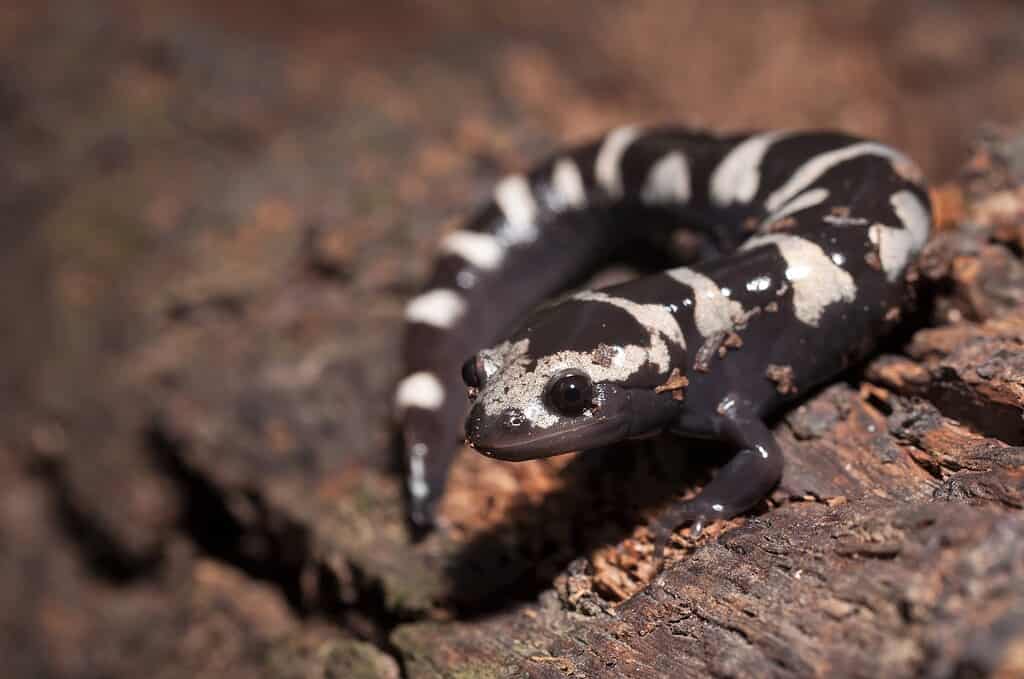
The marbled salamander is a mole salamander species native to the Eastern United States.
©Mike Wilhelm/Shutterstock.com
North Carolina also named the marbled salamander its official state salamander in 2013.
Ohio: Spotted Salamander (Ambystoma maculatum)
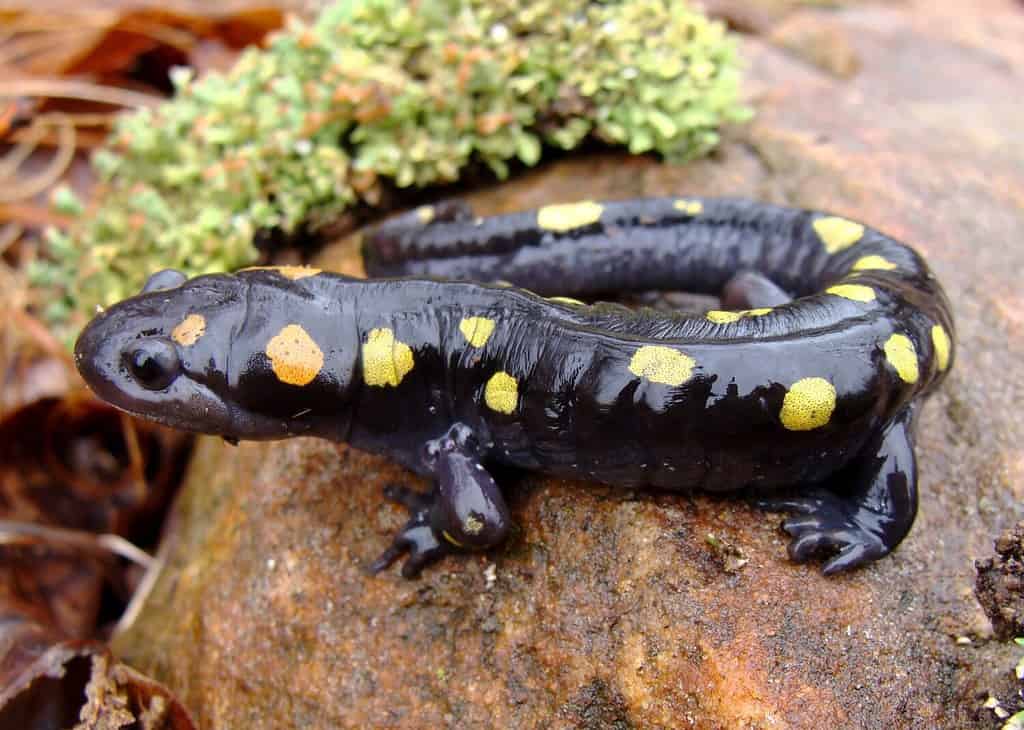
The spotted salamander is a widespread species of mole salamander ranging across the Eastern United States and southeastern Canada.
©Matt Jeppson/Shutterstock.com
Ohio named the spotted salamander its official state amphibian in 2010.
Ohio: American Bullfrog (Lithobates catesbeianus) (State Frog)

The American bullfrog is originally native to the eastern half of North America but has spread across much of the western half as well.
©Carl D. Howe / Creative Commons
Ohio named the American bullfrog its official state amphibian in 2010.
Oklahoma: American Bullfrog (Lithobates catesbeianus)

The American bullfrog is originally native to the eastern half of North America but has spread across much of the western half as well.
©Carl D. Howe / Creative Commons
Oklahoma named the American bullfrog its official state amphibian in 1997.
Pennsylvania: Eastern Hellbender (Cryptobranchus alleganiensis)
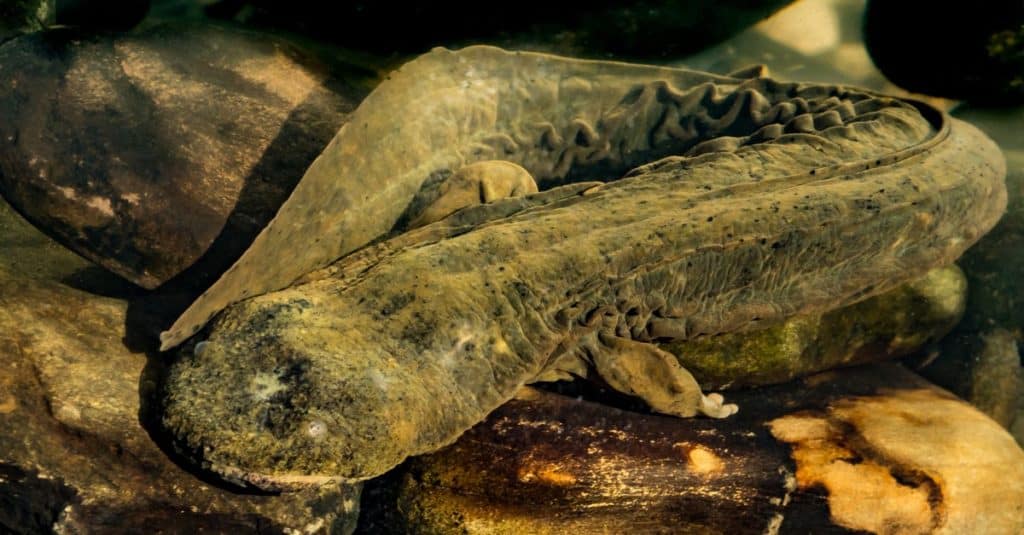
The eastern hellbender is the largest salamander in North America.
©Jay Ondreicka/Shutterstock.com
Pennsylvania named the eastern hellbender its official state amphibian in 2019. The IUCN currently lists it as a globally threatened species.
South Carolina: Spotted Salamander (Ambystoma maculatum)

The spotted salamander is a widespread species of mole salamander found across the Eastern United States and southeastern Canada.
©Matt Jeppson/Shutterstock.com
South Carolina named the spotted salamander its official state amphibian in 1999.
Tennessee: Tennessee Cave Salamander (Gyrinophilus palleucus)
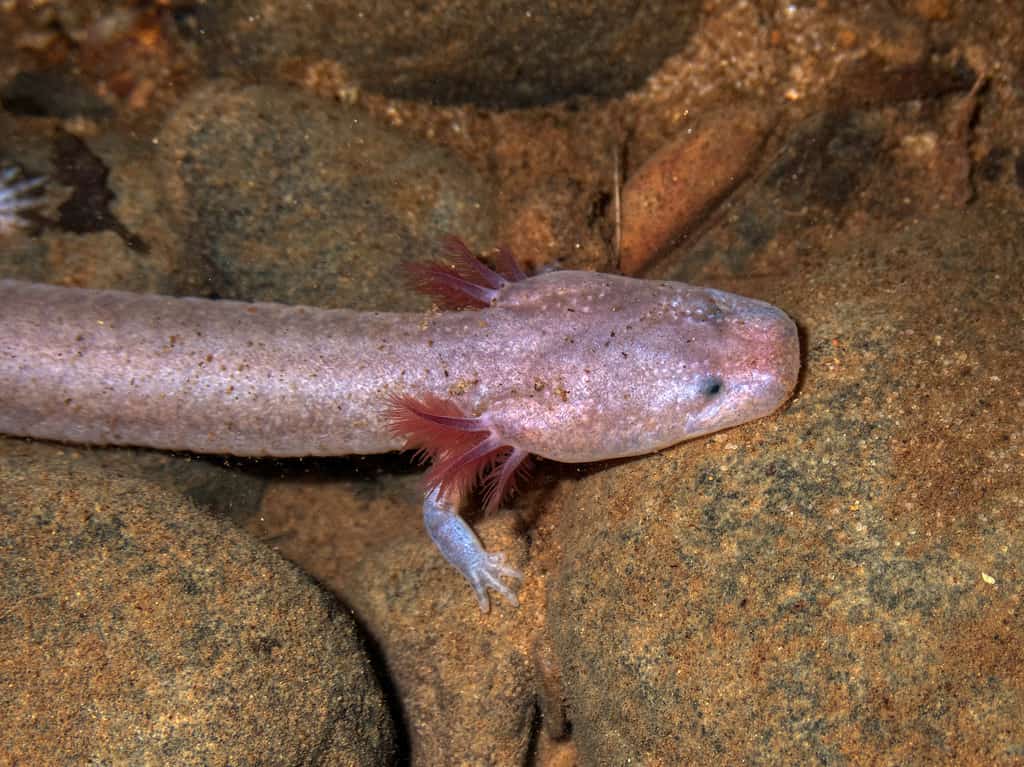
The Tennessee cave salamander is endemic to the Appalachian Mountains.
©Matthew L Niemiller/Shutterstock.com
Tennessee named the Tennessee cave salamander its official state amphibian in 1995. The IUCN currently lists it as a globally threatened species.
Texas: Texas Toad (Anaxyrus speciosus)
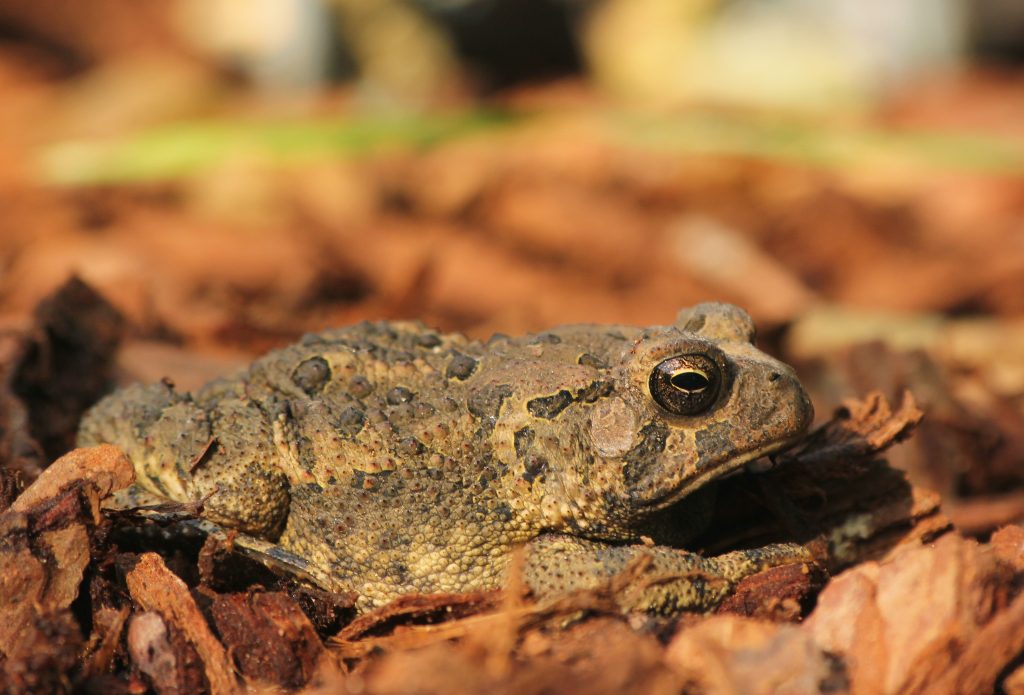
The Texas toad’s range includes Texas, New Mexico, Oklahoma, and northern Mexico.
©Marti157900/iStock via Getty Images
Texas named the Texas toad its official state amphibian in 2009.
Vermont: Northern Leopard Frog (Lithobates pipiens)

The northern leopard frog has multiple color morphs across its range in both the United States and Canada.
©Jason Patrick Ross/Shutterstock.com
Vermont named the northern leopard frog its official state amphibian in 1998.
Virginia: Red Salamander (Pseudotriton ruber)
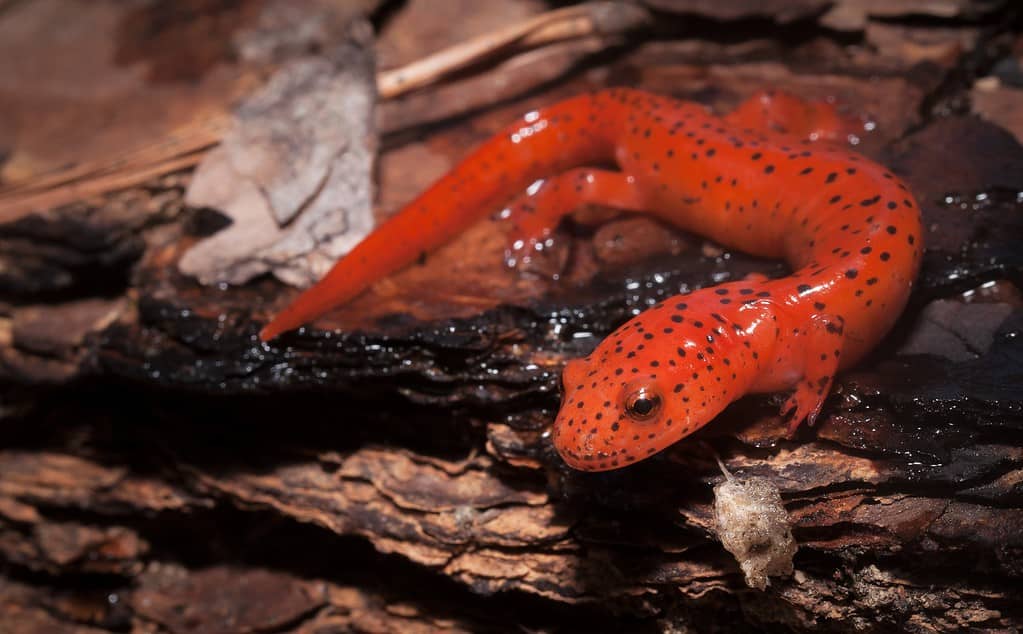
The red salamander is endemic to the Eastern United States.
©Mike Wilhelm/Shutterstock.com
Virginia named the red salamander its official state amphibian in 2018.
Washington: Pacific Tree Frog (Pseudacris regilla)
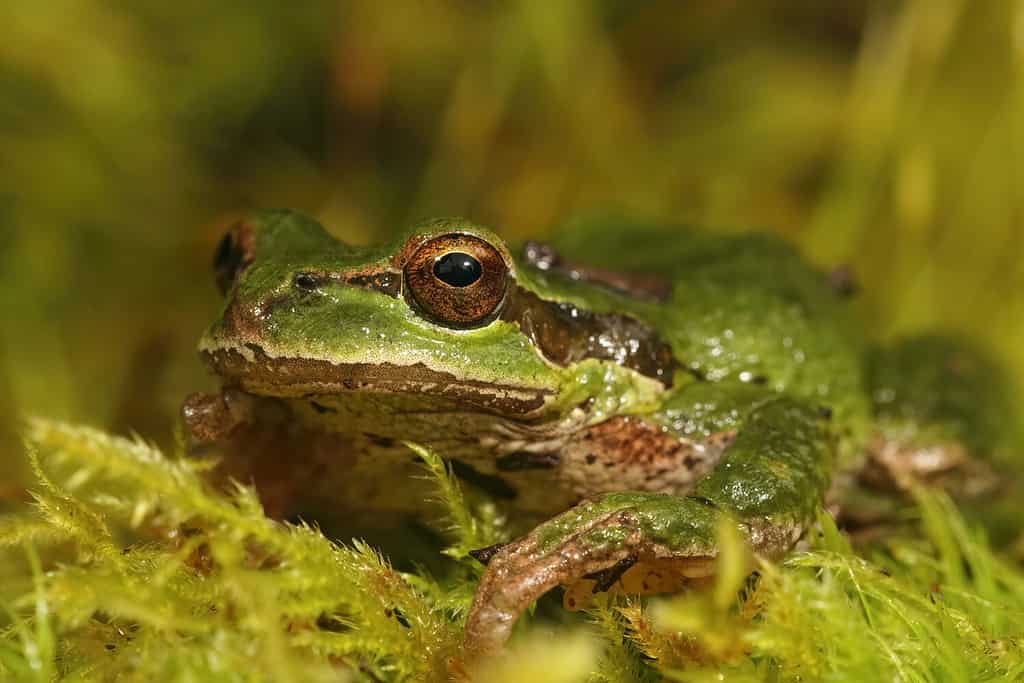
The Pacific tree frog is endemic to the Pacific Northwest.
©Oakland Images/Shutterstock.com
Washington named the Pacific tree frog its official state amphibian in 2007. It is also called the Pacific chorus frog.
West Virginia: Red Salamander (Pseudotriton ruber)

The red salamander is endemic to the Eastern United States.
©Mike Wilhelm/Shutterstock.com
West Virginia named the red salamander its official state amphibian in 2015.
Wyoming: Blotched Tiger Salamander (Ambystoma mavortium melanostictum)
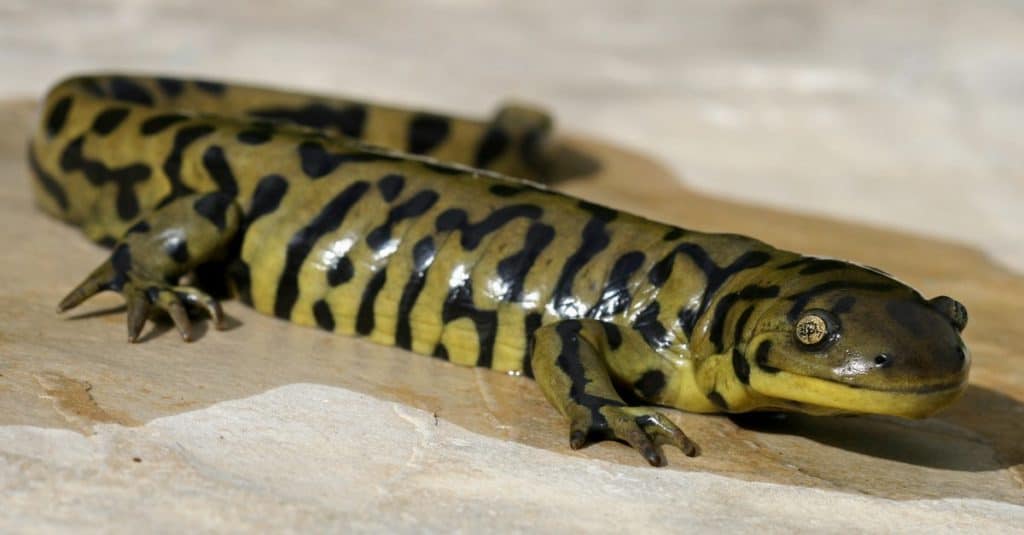
The blotched tiger salamander is a subspecies of the western tiger salamander aka barred tiger salamander.
©Ryan M. Bolton/Shutterstock.com
Wyoming named the blotched tiger salamander its official state amphibian in 2019.
Summary Table of “The Complete List of Every U.S. State Amphibian”
| State | Species | Year Named | Notes |
|---|---|---|---|
| Alabama | Red Hills Salamander (Phaeognathus hubrichti) | 2000 | |
| Arizona | Arizona Tree Frog (formerly Hyla eximia, now Dryophytes eximius & Dryophytes wrightorum) | 1986 | Wright’s Mountain Tree Frog (Dryophytes wrightorum), now the only one found in AZ |
| California | California Red-Legged Frog (Rana draytonii) | 2014 | |
| Colorado | Western Tiger Salamander (Ambystoma mavortium) | 2012 | aka Barred Tiger Salamander |
| Georgia | American Green Tree Frog (Dryophytes cinereus) | 2005 | |
| Idaho | Idaho Giant Salamander (Dicamptodon aterrimus) | 2015 | |
| Illinois | Eastern Tiger Salamander (Ambystoma tigrinum) | 2005 | |
| Iowa | American Bullfrog (Lithobates catesbeianus) | – | unofficial |
| Kansas | Barred Tiger Salamander (Ambystoma mavortium) | 2005 | aka Western Tiger Salamander |
| Louisiana | American Green Tree Frog (Dryophytes cinereus) | 1993 | |
| Minessota | Northern Leopard Frog (Lithobates pipiens) | – | proposed in 1998 & 1999 |
| Missouri | American Bullfrog (Lithobates catesbeianus) | 2005 | |
| New Hampshire | Red-spotted Newt (Notophthalmus viridescens) | 1985 | |
| New Jersey | Pine Barrens Tree Frog (Dryophytes andersonii) | 2018 | |
| New Mexico | New Mexico Spadefoot Toad (Spea multiplicata) | 2003 | |
| New York | Wood Frog (Lithobates sylvaticus) | – | proposed in 2015 |
| North Carolina | Pine Barrens Tree Frog (Dryophytes andersonii) | 2013 | State Frog |
| North Carolina | Marbled Salamander (Ambystoma opacum) | 2013 | State Salamander |
| Ohio | Spotted Salamander (Ambystoma maculatum) | 2010 | |
| Ohio | American Bullfrog (Lithobates catesbeianus) | 2010 | State Frog |
| Oklahoma | American Bullfrog (Lithobates catesbeianus) | 1997 | |
| Pennsylvania | Eastern Hellbender (Cryptobranchus alleganiensis) | 2019 | |
| South Carolina | Spotted Salamander (Ambystoma maculatum) | 1999 | |
| Tennessee | Tennessee Cave Salamander (Gyrinophilus palleucus) | 1995 | |
| Texas | Texas Toad (Anaxyrus speciosus) | 2009 | |
| Vermont | Northern Leopard Frog (Lithobates pipiens) | 1998 | |
| Virginia | Red Salamander (Pseudotriton ruber) | 2018 | |
| Washington | Pacific Tree Frog (Pseudacris regilla) | 2007 | |
| West Virginia | Red Salamander (Pseudotriton ruber) | 2015 | |
| Wyoming | Blotched Tiger Salamander (Ambystoma mavortium melanostictum) | 2019 |
The photo featured at the top of this post is © iStock.com/187715314








